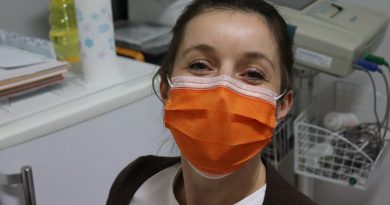This is Why Some People’s Muscles Suddenly Turn Into Bone
This is Why Some People’s Muscles Suddenly Turn Into Bone
What is Fibrodysplasia ossificans progressiva (FOP)?
There is a rare disease that does something that most would this is impossible – it turns muscle and other soft tissue into bone. This occurs without warning and can severely limit the person’s mobility. This is a condition that affects thousands of people and causes a lot of suffering for the people that have to live with the disease.

The disease that is responsible for this is called fibrodysplasia ossificans progressive (FOP). When an attack hits near a joint, it can completely immobilize any movement in that area. It can affect areas like your rib cage making it difficult to eat and breathe, your jaw, your knees, elbows and any other area throughout your body.
Identifying The Cause
After 20+ years of research, scientists have narrowed down the trigger for the people that are diagnosed with FOP to a molecule that wasn’t considered to play a role in this disease until very recently. It is a gene mutation that is present in 97% of the people that have FOP. The trigger mechanism with this gene works differently than researchers have anticipated through this molecule.
RELATED ARTICLE: Foods and Supplements for Fibromyalgia
Eileen Shore, a cell and genetics biologist who played a key role in identifying the trigger gene talked about how surprise she was when they discovered the cause. At the time, they were not aware that the gene would be able to behave in a way that would cause bone to grow so randomly and abruptly. It was a major breakthrough in the gene and cell research field.
The Responsible Gene
The gene that is responsible for triggering the bone growth is called the ACVR1 gene. It is not the healthy version of the gene. The trigger occurs only if the gene is mutated. The mutated gene created an overstimulated surface protein on the soft tissue cells known as the transmembrane receptor. This malfunctioning gene interferes with the signals that are sent to the brain that control bone growth. This interruption can sometimes cause rapid bone growth.
FOP Treatment Testing
Once researchers were able to identify the trigger for FOP, they were able to test for possible cures. They have been testing a type of protein therapy on mice. The treatment involved using a monoclonal antibody protein and it was a tremendous success. During this study, the mice that had a comparable disease were treated with the protein therapy. The results were very good. The mice that were treated completely stopped the spontaneous bone generation.
RELATED ARTICLE: Top 10 Most Common Genetic Disorders
Researchers are unsure whether or not the treatment will work in the same way on humans but after the results they have seen so far, they have plenty of reason to be optimistic. Researchers are aggressively testing this treatment and trying to bring it to human testing as soon as possible. They are still a long way away from that point but things are looking very promising so far.
Living With FOP
As for those that are living with the disease, they have not had a lot of hope before this potential treatment came along. It is not a condition that affects many people which is the main reason as to why it has taken so long to find a potential treatment for the disease. There has never been a large emphasis on FOP research because it is so rare to find in people. Now there is finally reason to be optimistic.
News.sciencemag.org En.wikipedia.org
